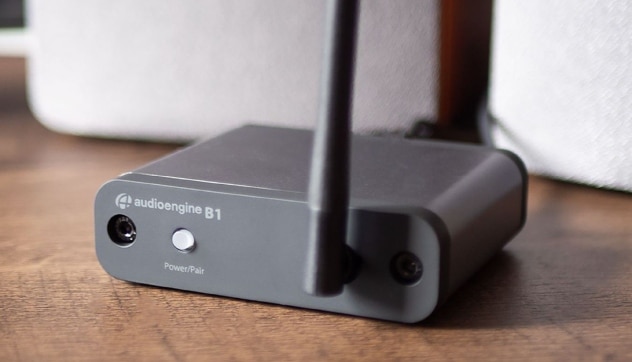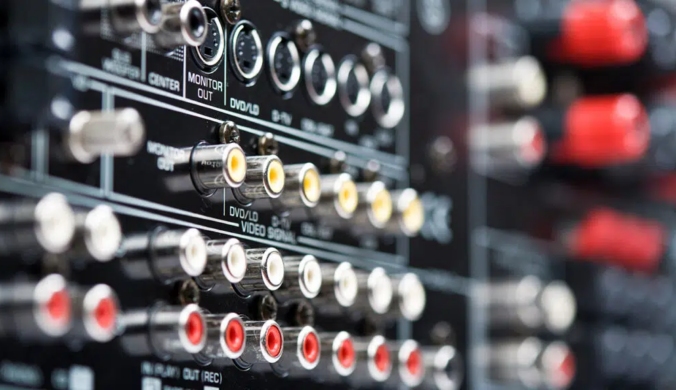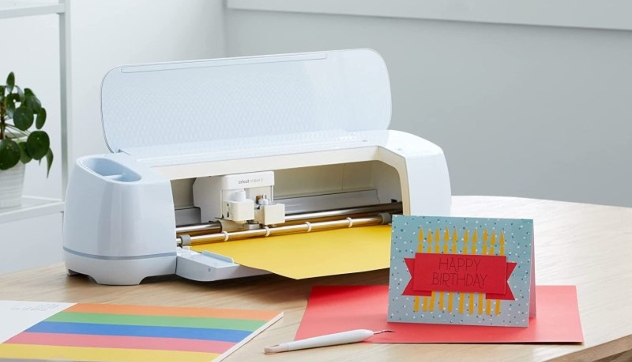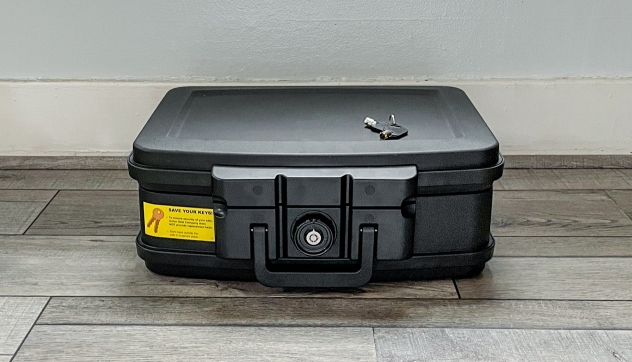The Best Soldering Irons for 2023
Assemble, hack, and fix electronics with ease and safety using these efficient, and all-around best soldering irons.

Soldering is one of the oldest and simplest forms of joining materials together using heat. As such, a soldering iron is an essential requirement for any electronics enthusiast. It is common in electronics repairs and fabrication and can be used with a variety of metals but is most often used to solder copper, nickel, and tin-based alloys.
A soldering iron consists of an electrically-heated tip that is attached to a handle. The tip of the iron has a pointy end that allows precision soldering. While soldering irons are great tools, using the wrong ones can subject you to electrical burns, poor heating, fire hazards, and mid-use breakdown. If you have experienced any of these unfortunate events, you need to replace your soldering iron with a better one. This is where our top selections for the best soldering irons come in!
Everything We Recommend
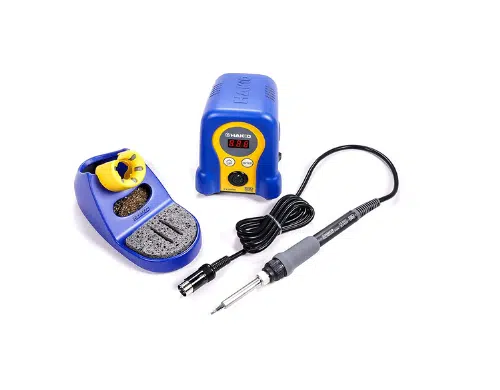
1. Best Product
Hakko FX-888D
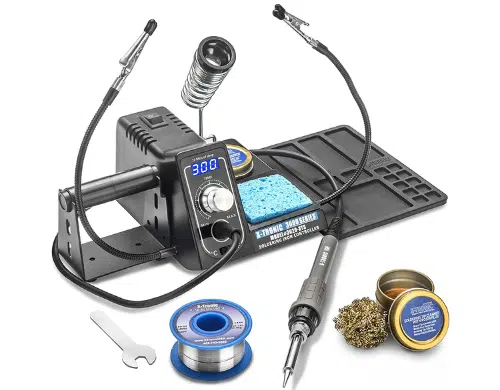
2. Runner Up
X-Tronic Model 3020-XTS
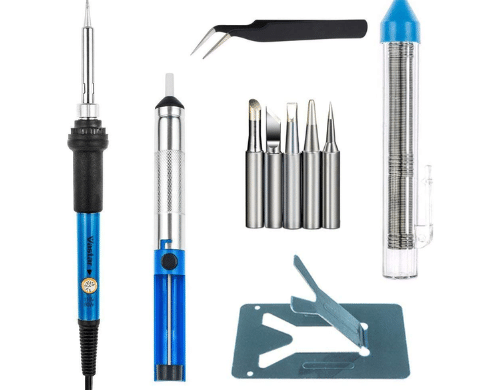
3. Cost Effective
Vastar
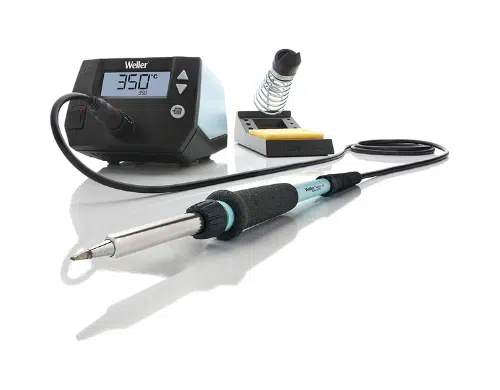
4. Almost Made the Cut
Weller WE1010NA
1. Best Product

1. Best Product
Hakko FX-888D
This pick offers easy, quick, and effective use and promises to last you a lifetime.
Specifications
- Item Dimensions
- 9.6 x 9.6 x 7.3 inches
- Item Weight
- 2.60 lbs
- Voltage
- 120.00 volts
- Wattage
- 70.00
- Display Type
- LCD
Pros
Benefits Mobility and Comfort
Adjustable Display
Ceramic Heating Element
Temperature Range up to 899∙F
Warms up Quickly
Cons
User Interface Is Difficult to Use
Who It's For
This soldering iron is a great tool for different types of people and professions. It's great for artistic work, repair work, or even manufacturing. This includes artists, designers, carpenters, mechanics, engineers, and jewelers.
Why It's Great
The Hakko FX-888D soldering iron is a high-performance, professional tool that can be used for soldering, brazing, and fabrication. It has a 70-watt ceramic heating element that heats up quickly. The handle is sturdy and lightweight, increasing its ease of use. The base has a heat sink, which drives heat away from the tool's tip and helps it retain heat longer.
Potential Flaws
Although this iron boasts an outstanding average Amazon rating of 4.9 stars out of five, praising its great temperature control, speedy heat-up process, and high-quality overall build, a few previous users complained that it gets weak after three to five consecutive uses. Hakko's customer service was also reviewed as being poor and unresponsive, especially when customers make complaints about the functioning of the soldering iron or request a replacement.
Other Features
Weighing 2.6 pounds, the Hakko FX-888D soldering iron is a reliable soldering and welding tool by the award-winning Japanese electronics company, Hakko. It has a capacity of 120 volts and 70 watts. This blue and yellow soldering tool features a compact yet stylish station, a lightweight ergonomic heat-resistant handpiece, an iron stand that includes a sponge and cleaning wire, a ceramic heating sensor, and five preset temperatures stored and displayed by the station.
It is ESD-safe, versatile, and accommodates a variety of soldering tips. The soldering iron heats up within 20 seconds. Unlike most soldering irons that become hotter by the minute when plugged in, the temperature of the Hakko FX-888D reduces during usage to prevent burn hazards.
2. Runner Up

2. Runner Up
X-Tronic Model 3020-XTS
This pick makes soldering easier than ever, sporting heat-resistant materials, a long power cord, and an effective sleep mode.
Specifications
- Wattage
- 75 watts
- Bulb Voltage
- 110 volts
- Item Weight
- 1 pound
- Product Dimensions
- 6 x 5.5 x 8 inches
- Material
- High Impact Polystyrene & Metal
Pros
This pick takes less than 30 Seconds to heat up from 392°F to 896°F
Maximum Power Output of 75 Watts
100% Silicone Tool Holder
Cons
Includes Only One Container
Occasionally Difficult to Get a Precise Temperature
Who It's For
The X-Tronic Model 3020-XTS LED soldering station is essential to any DIY electronic enthusiast's kit, and it can be used by just about anyone.
Why It's Great
For starters, the temperature range is adjustable, which makes it ideal for soldering all kinds of metals. The tip can also be replaced with an extra-long one if you need to get into more difficult areas of your project. The large surface area of the heating element provides for even heat distribution across your workpiece, which means that you'll be able to complete your projects faster and with less chance of accidentally burning yourself.
Potential Flaws
Previous users of this soldering iron reviewed its service on Amazon. Some customers noted that it is poorly constructed, its temperature often fluctuates wildly, it possesses bad quality control, it doesn't enter or exit sleep mode predictably or seamlessly, and it has unimpressive X-Tronic customer service. Some customers also questioned its durability, warranty, and 75-Watt heating power.
Other Features
Manufactured by X-Tronic, the 3020-XTS model includes a 75-Watt soldering station (which comprises a 60-Watt soldering iron and a 15-Watt mini motherboard in the soldering iron), a side-mounted roll holder, a silicone tool mat, two detachable corded helping hands, a brass tip-cleaning sponge, and a cleaning flux. Similar to our top pick (Hakko FX-888D), the X-Tronic Model 3020-XTS Soldering Station is ESD-safe.
In addition, it has a Proportional-Integral-Derivative (PID) heating technology, an anti-static design, a 10-minute sleep timer, a toggle switch that converts the temperature from Centigrade to Fahrenheit, and a bright blue LED light that glows on the temperature display for easy deciphering of the temperature indication. The soldering iron features a 40-inch pliable soldering cord and a 55-inch power cord that connects the wall plug to the main soldering unit.
3. Cost Effective

3. Cost Effective
Vastar
This pick is perfect for those wishing to get familiar with the soldering process without spending a fortune and describes as a Plug and Play tool.
Specifications
- Item Dimensions LxWxH
- 13.4 x 2.5 x 1.4 inches
- Upper-Temperature Rating
- 450 Degrees Celsius
- Item Weight
- 8.5 ounces
- Burner type
- Ceramic
- Soldering Iron Length
- 7.0 In
- Cable Length
- 59.0 In
- Working Voltage
- 110V Power: 60W
Pros
Upgraded Heat Dissipation
5 Pcs Iron Tips
Easy To Operate
Cons
No Display to Tell Precise Temperature
Tip May Require Tightening After Use
Who It's For
The soldering tool in this kit can be used by anyone who has a basic understanding of electronics, but it is especially useful for people who work with computers and other devices that require soldering. It can also help in the repair of broken or damaged electronic components or boards. If you are looking to get into electronics repair, this affordable yet dependable soldering kit includes everything you need
Why It's Great
This soldering iron is ideal for repairing electronics like computers, printers, and game consoles. Instead of having to pay for expensive repairs or buy new parts, you can fix your electronics with this soldering iron. The solder is made of solid tin and lead, so it doesn't get clogged up as easily as other metals do. It comes with built-in temperature settings that allow you to decide how hot you would like the tip of your soldering iron to be for the task at hand.
Potential Flaws
With an average Amazon rating of 4.5 stars out of five, this soldering iron was all that most previous customers dreamed it would be. However, some reviewers had a few flaws to point out, including its suspicious heat control feature, unstable heat-up process, failed UL testing, and poorly durable soldering tips that go bad after one or two consecutive uses.
The rubber on the gun handle has also been reviewed as being of low quality, as it slightly melts after the first use. The spring iron cannot get above 300 °F, even though the temperature control claims to be maxed out at 450 °F.
Other Features
Weighing 0.55 pounds, the blue Vastar soldering set is our cheapest selection, but it doesn't disappoint in power or overall performance. It comes with more accessories than our other picks, including five different tip sizes, and has the highest maximum heat. It features a heat-up duration of one minute and 23 seconds, a working voltage of 110 volts, a power capacity of 60 watts, a steel-pipe design for heat dissipation, a control knob with a few temperature settings, and a comfortable handle.
The solder in the kit comes in a pen-shaped tube. The solder is easy to hold and equally easy to apply to a circuit board. It is made with 60% tin and 40% lead. The soldering stand in this set is a barely-sturdy Y-shaped piece of metal that helps to hold the soldering iron and keep the tip off the table.
4. Almost Made the Cut

4. Almost Made the Cut
Weller WE1010NA
With careful and heat-resistant materials, this pick is ideal for those wanting consistent and safe results.
Specifications
- Wattage
- 70 watts
- Bulb Voltage
- 120 volts
- Warranty Description
- 1 year
- Item Weight
- 5.51 pounds
- Product Dimensions
- 5.91 x 8.86 x 12.4 inches
Pros
40% more powerful
ESD Safe
Temperature stability
Intuitive Navigation
Cons
Poor Customer Support
Produces Bad Smell Over Time
Who It's For
This high-end soldering iron is for anyone who needs to solder. It is especially useful for those who professionally work with electronics and other types of mechanical devices because of its high cost. It is commonly used in industrial settings where high temperatures and a low tolerance for error are required.
Why It's Great
The Weller WE1010NA is one of the best-priced soldering irons on the market, and it is easy to see why. It has a durable design that makes it perfect for on-the-go use, and it comes with a handy carrying case that keeps your tools in good shape when they are not in use.
This particular model is part of Weller's "Pro" line of soldering irons, so you know you're getting a high-quality tool that will last for years. The tip of the soldering iron is made from a nickel alloy, which means it is very strong but also highly resistant to corrosion. The temperature control dial allows you to set the temperature at which your iron works.
Potential Flaws
This soldering iron lacks great customer support and sometimes stays stuck in sleep mode. The display flickers, showing a wild jump from the set temperature to higher temperatures and all other points between, even though the heat seems stable at the tip.
Occasionally, the iron fails to reach a temperature higher than 134 °F. Its price is a huge margin away from the cost of our other selections, reducing its chances of being cost-effective. Because of this, we had to strike it from our list of top picks.
Other Features
This pastel aqua and the black 70-Watt soldering station have an easy-to-read LCD screen that displays temperature, three push buttons for temperature control, intuitive navigation through the new SW features, and a front switch for switching the iron on or off.
The soldering iron is pencil-like, has a co-molded grip, and is very lightweight. The stand holds the solder securely in place between every use. The best part is that you can choose from a varied selection of high-quality, durable, and easy-to-change ET tips.
Who This Is For
The soldering irons featured here are for anyone who wants to solder their own electronics. They are particularly great for hobbyists and DIY enthusiasts. Soldering irons are also useful for professionals who need to make repairs on electronic devices.
What is a soldering iron used for?
Soldering irons provide three main functions: melting, heating, and soldering. The first function is achieved by heating the workpiece with a high-temperature flame. This melts the solder so that it can flow onto the objects to be joined. The second function is achieved by depositing molten solder onto any gap, allowing two objects to be attached permanently. Finally, soldering allows for electrical connections between two surfaces that may not directly touch each other.
Is using a soldering iron safe?
Soldering irons can be dangerous, especially if you’re not careful. However, they are pretty safe to use as long you take the necessary precautions. Easy safety tips include using a solder stick instead of touching the iron directly with your fingers. Never leaving the soldering iron unattended. Make sure there is no water on the tip of the iron before using it and always turn off the soldering iron after use.
Why You Should Trust Us
With the variety of options on the market, there is no shortage of great, durable, or powerful soldering irons. However, most of these do not work as advertised. By carrying out in-depth research, committed testing, and including transparency in the results we have relayed to you, we are confident that our curated picks can stand the test of time.
How We Picked
A soldering iron is an important part of your electrical toolkit, and choosing the best soldering iron for your needs can be a daunting task. The features that make up a good soldering iron can vary from model to model, but there are a few key factors to consider when shopping for one.
Temperature controls
The best soldering irons have varying temperature controls for different soldering tasks. Having this kind of flexibility allows you to choose how hot you need your soldering iron to get so that you can achieve proper results.
Power
This feature determines the energy flowing in and out of the soldering iron, and the overall strength of the soldering iron. You’ll want to choose an iron that has enough power to complete whatever task you’re trying to accomplish at a reasonable pace without causing damage or overheating.
Wattage
To determine the best soldering iron for you, you will need to consider its wattage. The high-wattage soldering irons are for heavy-duty work. These tasks include making connections between electronic devices or metal components that are difficult to solder. The low-wattage soldering irons are more suited for lighter jobs such as making connections between electronic devices or metal components that are easy to solder with small tools like screwdrivers and pliers.
Safety features
Every soldering iron needs adequate safety features to help prevent burns and other electrical injuries. Some soldering irons come with safety tips and handles that help to prevent burns and certain electrical-induced injuries. Other high-end ones have built-in fire-extinguishing technology to help you fight flames in case of a fire.
Price vs quality
This feature helps you to figure out which soldering irons are worth your money. If a product costs outside your budget but is of high-quality build, you may want to consider it. At the same time, a cheap soldering iron might not last very long or work well. Analyzing the quality of soldering irons while considering each one’s price is crucial to ensure that you make the best buy.
Size
There are different sizes of soldering irons available. Each one has different uses depending on what kind of work you’re doing with it. The size of the soldering iron is important because it dictates how much current the solder will be able to flow through it. The larger the current, the more heat. This means that you can create stronger connections between pieces of metal with less effort on your part. A large soldering iron will generally create stronger joints than a smaller one would.
Durability
This factor determines the number of times you can use your soldering iron before it begins to let up or stop working. A good soldering iron holds up better than one that isn’t well-made, maintaining its major and even safety features.
Heat-resistant handle
Soldering irons get very hot which is why they need to have heat-resistant handles. These unique handles protect your fingers from high temperatures, ultimately ensuring stress-free and hazard-free soldering.
Easy to use
You need to be able to quickly and easily use your soldering iron without having to struggle with it. Also, the more comprehensible the user manual, the better.
Easy to clean
Soldering is a messy activity, so the soldering iron of your choice must be easy to clean. Poor ease of cleaning can lead to constant overheating, iron rust, and eventual damage.
How We Picked
-
Temperature Control
We chose models with programmable temperature settings so that your iron maintains the proper temperature throughout your workday. It will enable you to make adjustments depending on what kind of material or metal you are working with.
-
Power/Wattage
The power rating of a soldering iron refers to its maximum wattage output, which directly affects how much heat is transferred from the tool's tip to a component. A soldering iron with a higher wattage will produce more heat than a lower-wattage model, allowing you to use less heat when working with high-wattage tools.
-
Safety Features
Each soldering iron needs a set of good safety features to help prevent injuries and fires. Such safety features include an insulated tip and a non-slip grip on the handle.
-
Cost-Effectiveness
A good soldering iron should have the perfect balance between price and quality. In view of this, we chose soldering irons that have a high-quality build, a long lifespan, and a warranty to help you get your money’s worth.
Care and Maintenance
If you’ve ever soldered a wire and got frustrated with a clogged or ruined tip, you know how important it is to keep your iron clean. As a result of frequent use, the tip can become clogged with dust and gunk. This can cause the iron to heat unevenly or not at all. Luckily, cleaning a soldering iron is easy, and here’s how!
How to clean
First, unplug the soldering iron and let it cool completely. Remove the tip from the iron by unscrewing it. Be careful not to touch the hot metal while doing this. Then, brush off any excess solder or flux that has accumulated on it. This should be enough to get rid of most of the residue, but if not, use a wet sponge or wire brush to tackle any stubborn spots.
Next, dip the tip in water and swish through it with your fingers until it is completely free of any solder buildup. You can also use a toothbrush to scrub away any remaining particles before reinserting them into your soldering iron. Finally, wipe down the tip with an alcohol-soaked cloth until it is clean and dry!
How often to clean
How often you clean your soldering iron depends on how often you use it. If as a professional jeweler, mechanic, or engineer, you must clean it at least twice a week to get rid of the daily gunk. On the other hand, if your soldering iron is used rarely for DIY projects and simple in-house soldering, you can consider cleaning your soldering iron before each use.
Handle with care
Always use a soldering iron stand when working with the tool. This will help keep the tip of your iron safely away from combustible materials. Make sure your iron is clean before using it on your project — this will help prevent overheating and reduce the risk of injury or damage. Never leave a hot soldering iron unattended while working on projects. Keep your soldering iron away from children and other inexperienced people.
Always unplug the iron from the power source before touching it or removing the tip from its holder. This will prevent accidental contact with other parts of the soldering iron or its tip holder, which could cause an electrical shock. Wear heat-resistant gloves and eye protection (good quality goggles). Rubber work gloves are a good choice because they will protect your hands from both heat and melted solder. Finally, if your soldering iron is faulty or broken, fix or replace it.
Dealing with issues
The most common problem that people encounter when using a soldering iron is clogging with solder. You can remedy this by removing the debris (like rust and iron particles) with a ball of steel wool after every use.
Turn the soldering iron off, and wait for it to cool. Wet the steel wool slightly, and scrub the soldering iron’s tip with the steel wool. Don’t dispose of the debris by throwing the particles in the trash. Instead, dedicate a trash can for the soldering debris and have the local or community electronic waste company pick the trash up periodically.
Sources and Research
Further Reading and Similar Topics

December 20, 2025
Cathode-Ray Tube Day
Let us honor technology — the inventions that have transformed our world and our daily lives.

January 9, 2026
Static Electricity Day
Let’s ignite a spark as we celebrate National Static Electricity Day together.

April 25, 2026
International Marconi Day
Today, we acknowledge the inventor of wireless communication and seamless radio transmission.
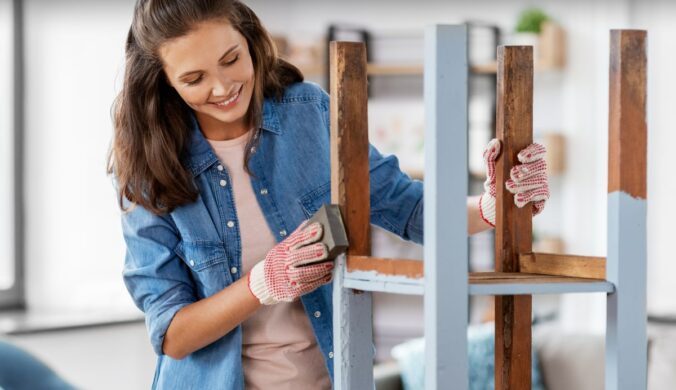
April 2, 2026
National DIY Day
Save money and time, and spark your creativity by just doing it yourself!

April 28, 2026
World Day for Safety and Health at Work
Safety and health at work are the names of the game on this day.

September 19, 2025
National Tradesmen Day
Let’s come together to express our gratitude to the tradesmen (and -women) of the country.

